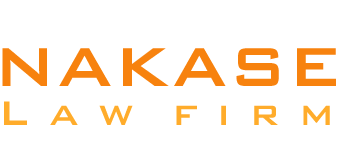Introduction
Forget about organizing your schedule for the upcoming months; it can be difficult to decide whether to bring your lunch on the initial day of new work. Should you be asked to create a 30-60-90 plan by your new employer early in the hiring procedure, you might have wondered what the point is or how to go about it.
However, we will give you the confidence to create one that is feasible and can help you position yourself for fulfillment in your new position. We provide thorough guidelines on how and when to create a 30-60-90 plan, as well as a template and example to help you get going.
30-60-90 plan: What is it?
As it is named, a 30-60-90 plan is a statement that sets out your objectives for the first 30, 60, & 90 days at the new job. Your top priorities, achievable goals, and means of checking progress over the initial three-month period are described. If you do it correctly, it can assist you in creating a good first impression on the supervisor you intend to work with in the near future.
When to create a 30-60-90 plan?
Although the form of many 30-60-90 plans is similar, the amount of detail may differ based on your circumstances. You may make one when you’re starting your new profession or while you’re getting ready for an interview.
1. 30-60-90 plan for interviews
“If you had this job, how do you see your first thirty, sixty, or ninety days?” They might ask you these questions if the interview gets to the final stage of the job. While it’s usually asked in upper positions, it is smart to be prepared to respond to this question in any job you are interested in.
More than anything else, the person in charge of hiring is probably attempting to learn about your mentality before the job interview using questions like these. They’re curious to understand:
- Do you understand the responsibilities and requirements of the job position?
- Are you able to pick things up fast and begin contributing right away?
- Do your thoughts demonstrate your suitability for this specific role?
Being ready with a plan will help you impress the person in charge of hiring and stand out from the competition, even if this query isn’t addressed directly during the interview. “Agile & proactive individuals are what employers are searching for,” says leadership expert Michael Watkins. “You exhibit agility and proactivity by discussing how you would tackle your first ninety days.”
You may occasionally need to present a 30-60-90 plan which is usually required for executive or other top-level jobs. A 30-60-90 plan is an excellent way to explain to the hiring manager that you are prepared to take care of any issues in the department or organization.
Depending on the position you are applying for, your pitch should contain a few particular concepts. These could be recommendations for ways to improve customer happiness, boost sales, or reduce expenses.
2. 30-60-90 plan for the new job
Your new manager might specifically request a written 30-60-90 plan when you start new work, or you might want to make one for yourself to assist you adjust to your new position. Setting yourself up to start strong and making sure you’re going in the proper direction are the objectives in each scenario.
“You will not accomplish anything if you arrive without a strategy and attempt to address every issue,” Kaplan states. “Identify a few tasks that you can complete satisfactorily.”
It will be simpler to develop a thorough, practical plan if you are already starting the job and have the benefit of internal assets and your new colleagues. Ask questions if you have any doubts about objectives, standards, or common benchmarks. Being proactive will probably impress your new coworkers, but more significantly, you’ll obtain the data you require to succeed.
3. 30-60-90 plan for the managers
There is only one significant difference between creating a 30-60-90 plan for the new manager and creating one for a new worker: You should take your team into account. Which team-building exercises are you going to use? Are you going to offer any training? What do you wish to achieve with the training?
If you are a supervisor/manager, it is wise to use a self-onboarding tool to set up a strategy that allows new hires to begin their duties as soon as possible. The plan helps you set up the goals for the first month and a list of tasks the employee needs to do each week during this period.
4. 30-60-90 plan for the trainers
Trainers, like managers, need to consider how they will interact with their staff throughout their first ninety days on the job. Since the main responsibility of a trainer is to help other staff members grow, some of your professional development and accomplishments will be linked to their success.
Your industry will determine what you put in your plan. A 30-60-90 sales plan can, for instance, have a learning phase in which you discuss the company’s offerings, KPIs, internal procedures, and software. Following a period devoted to putting the lessons gained into practice, there will be an improvement phase during which you will assist the team in honing their customer service and general sales techniques.
5. 30-60-90 plan for Chief Financial Officer
Your 30-60-90 plan as a new CFO will probably require a great deal of learning and planning. Although every business is unique, you should typically evaluate the company’s financial situation, taking into account cash flow, auditing and accounting procedures, and possible problems.
You can then create a strategy for the remaining ninety days. Remember to focus on actions that will have a big impact on the company’s finances right away.
What needs to be included in a 30-60-90 plan?
Do some initial research into the main elements your 30-60-90 plan requires. As the name implies, you should consider your plan in 3 30-day stages, which correspond to your first thirty, sixty, and ninety days of employment. For every stage, you must:
- Choose a particular area of focus.
- Establish your main priorities.
- Set specific objectives to help you achieve those aims.
- Decide how success will be measured.
For every single month in the first three months, follow these steps to complete the main sections of your plan:
1. Focus
Depending on your position and the organization, your particular monthly focus may vary, but generally speaking, the general focus for every 30-day period will resemble this:
- Learning is the focus of the initial month (days 1 to 30) of the new position.
- The second month is dedicated to planning and starting to contribute.
- The third month is dedicated to execution and, if necessary, starting to alter the status quo.
2. Priorities
List your top priorities for every phase within those general monthly categories. For example, understanding internal procedures, carrying out your duties autonomously, or coming up with solutions for an issue the business is facing could be your objectives during certain stages. Priorities ought to be more general than your objectives yet more precise than your focuses.
3. Objectives
Creating a plan to accomplish your overall priorities is the foundation of goal-setting. Establish objectives for every stage that correspond to your declared priorities and areas of concentration. Divide your objectives into learning, achievement, and individual goals if it helps.
- Learning objectives: Ask yourself, “What knowledge and abilities do I require to be successful?” How can I learn those skills and assimilate that material the most effectively?
- Performance objectives: These are specific objectives that you wish to fulfill in your new position. Ask how you plan to grow during your first 30-60-90 days.
- Individual objectives: The first objectives are mostly about adjusting to your company and learning about the people you’ll be working with. Asking “Who are the main people I want and need to create relationships with?” will help you set these. How do I build and maintain those connections to be regarded as reliable and credible?
4. Metrics
Choose a minimum of one data point to monitor your progress toward each target. “What does accomplishment look like or how will I assess it?” is a question to ask yourself. Are you unsure of how to proceed? Continue reading!
How to create a 30-60-90 plan?
How will you come to know your priorities, goals, metrics, and areas of focus for a new position? You must learn more about the problems the department or firm is attempting to solve and consider how you may contribute during the first ninety days. Here are six suggestions to help with that:
1. Consider the big picture
Consider your general priorities before you begin to write out particular objectives and measurements. According to Yolanda Owens (career coach), “Start with what’s essential to you and build out from there.” In order to succeed, what necessary knowledge will you need? Make use of them as a guide.
Determine the reason they recruited you (or are considering hiring you) and establish priorities that advance that goal. You’re probably being hired for their middle and upper-management positions to oversee a specific project or find a solution to a particular issue. Getting up and running on the fundamentals of your function and the organization’s operations can be your top priority for other junior roles.
2. Ask Questions
No matter if you are a new member or have just started the interview, always make sure to ask questions. To pick the right aims and steps, you should start with a basic understanding of what’s happening in the company.
You can use preliminary interviews to pose questions that could assist you later create a 30-60-90 plan, or you may ask these questions to your new teammates. “What can I handle in the initial 90 days that would enable me to get off the ground rolling and also make a substantial effect in the company?” is a question that Tamara Williams (career coach) advises asking upfront.
3. Meet with important parties
Building positive workplace relationships is essential for success in any position. Within the initial 30 days of starting the position, schedule meetings involving the following individuals:
- Your supervisor
- Other team members who you will collaborate closely with
- Other coworkers in your position or one comparable to it
- Any cross-functional collaborators you’ll frequently collaborate with on different teams
- Any outside partners you’ll collaborate with on a frequent basis
- In the event that you are a manager, your new subordinates
Learn about your teammates’ responsibilities inside the organization and get familiar with them personally during each meeting. As you begin to understand the ropes, ask numerous questions concerning the organization’s culture, internal procedures, reporting systems, team and company difficulties, and other topics that come up. Before you decide to alter the current system, it is crucial to have these discussions.
“A lot of the time, [people] enter the position and say, ‘We did it like that at my previous organization,'” Williams recalls. That makes people uncomfortable. Before being a teacher, you must be a student.
4. Set SMART objectives
Setting concrete goals that correspond to what’s most important for the 30-6-90 plan comes after you’ve established your highest-level priorities. These objectives need to be SMART.
Instead of just “Understand search engine optimization,” the SMART goal is: “Within the first thirty days, choose the most important ten keywords and review our current results for them.”
5. Decide how success will be measured
This will probably vary depending on your objectives. While earnings, page views, and other metrics are frequently measurable, other objectives may include more qualitative measurements, such as favorable client reviews. But even qualitative indicators, like the quantity of five-star ratings you get, should be quantifiable.
6. Be flexible
Every task is different, so don’t worry if you don’t wind up implementing the plan exactly. Adapt your plan according to your knowledge of the position and company, but acknowledge that it will probably alter. In your first ninety days and throughout your time at the organization, ask your supervisor for feedback. Adjustments along the process can happen.
When you’re leading a team or are an executive, think about including, “Conduct a SWOT analysis of my project, my team, the department, or the company as a whole,” in your plan for the second and subsequent months. Once you complete this exercise it might help you adjust the rest of your plan as well as set longer-term goals and strategies.
Additionally, Kaplan advises that the quality of your documented plan is more important than its length. “I’ve received [ninety-day plans] which were 40 pages lengthy and of no use, and two pages lengthy and flawless.”
30-60-90 plan example
Start making your own plan by using our 30-60-90 plan template. This sample can serve as a source of inspiration if you’re having trouble filling it in.
Days 1 to 30
Focus: Acquiring knowledge
Priorities: Learn more about my position, my team, and the business overall. Recognize my manager’s expectations of me, become familiar with the present internal procedures and processes, and begin investigating some of the difficulties the business and my position face.
Learning goals
- Request my manager to suggest books, papers, and studies for me to read, and go through all of the pertinent internal resources that are on the company’s website or drive. (Metric: finished reading)
- Obtain access to the account details (email, CRM platform, task management software, etc.) I’ll have to go to work. Take the time to get to know each of these. (Metric: Finished task)
- Listening to five of your more experienced coworkers’ recorded sales calls. (Metric: Heard five sales conversations.)
- To find out what new customers can anticipate from the onboarding process, schedule a meeting with a member of the account management team. (Metric: Finished task).
Performance objectives
- Make my initial sales calls to important customers and potential clients. (Metric: Completed three sales calls.)
- Get my manager’s opinion on my performance and productivity. Keep a record of the comments so I can apply them to my next performance. (Metric: Finished task)
Personal objectives
- Meet as many new coworkers as you can, including my manager. Learn about their responsibilities within the company and introduce myself. (Metric: Held five meetings.)
- Arrange regular meetings with all of the people I will need to collaborate with frequently, including external partners and cross-functional teams. (Metric: Attendance and setting up of regular meetings)
Day 31 to 60
Focus: Making contributions
Priorities: Fulfill my duty to the best of my ability, with less supervision. Investigate how I can contribute in a special way to my position and the business.
Learning objectives
- To learn how to use our CRM platform more effectively, finish a course of online training. (Metric: Completion of one course)
- I will shadow an experienced team member, listen to three or more of their calls, and record my observations of their methodology. (Metric: Task finished.)
Performance objectives
- Make five weekly sales calls to important customers and potential customers. (Metric: completed 20 calls)
- Request that an experienced team member watch at least a few of my sales conversations and offer suggestions on how I may get better. (Metric: Completed task)
- Take notice of my own input after listening to at least 4 of my own call recordings (Metric: Four conversations listened to)
- My management and coworkers should be asked for their opinions, and I should record them so I may use them later. (Metric: Unspecified)
Individual goals
Set up a lunch or coffee appointment with a corporate employee I haven’t yet met. (Metric: Completed task)
Days 61 to 90
Focus: Taking charge
Priorities: Take on greater responsibility and look for small opportunities to exercise your leadership abilities. Investigate objectives for the remainder of the year.
Learning Objectives
- Find and enroll in an online course, webinar, or conference that will support my professional growth. (Metric: One registration for a webinar, course, or conference)
- Examine my success to date and determine the important measures that are important to me (leads, revenue, sales, etc.). Try to boost that metric by putting a test into action. (Metric: Completed task)
Performance objectives
- Using the metrics I specified, carry out my primary duties more effectively. (Close more deals, make more money, etc.) (Metric: Unspecified)
- Create a concept for a fresh endeavor or project that I can lead and present it to my management. (Metric: Completed task)
- Get input from important parties and finish the initiative or project I described. (Metric: Three important stakeholders’ input after the project or program is finished.)
Individual objectives
Join a company-sponsored sports team or club, or participate in the corporate volunteer day, to get active in extracurricular activities within the organization. (Metric: Activity finished.)
Bottom Line
Writing a 30-60-90 plan can be daunting at first, but it gets simpler once you start dividing it down into smaller parts. You’ll be ready to handle your first ninety days in the new position or get the job you want with our blueprint, examples, and instructions. Keep in mind that you can modify our advice to fit your unique circumstances, always keeping in mind what you can truly do in ninety days. Have fun with your planning!
FAQs
1. Which phases make up the 30-60-90 plan?
Three phases are typically included in a 30-60-90 plan: learning (1 to 30), contributing (31 to 60), and engaging in action (61 to 90).
2. A 30-60-9 content plan: What is it?
A 30-60-90 day content strategy is a document that outlines your goals for the first ninety days if you are employed in marketing or a creative function comparable to that. For instance, it can offer measurable and doable strategies for enhancing the company’s online content or follower engagement.
3. How should a 30-60-90 interview plan be written?
You may utilize our template as a starting point if you are requested to prepare and present a 30-60-90 plan during an interview. You should demonstrate to the employer that you are aware of the duties associated with the position for which you are seeking. They are interested in knowing if your ideas match their standards and the objectives of the organization, as well as how (and how quickly) you would begin contributing.































